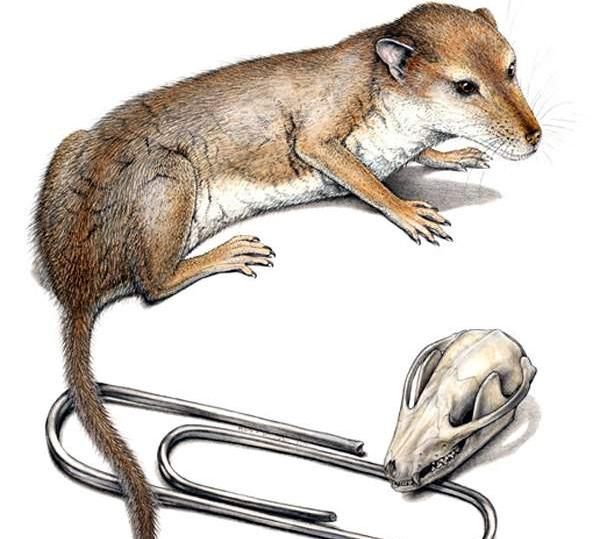
General Information
One of the first mammals of the Mesozoic era was Hadrocodium, whose external structure may remind modern rodents of the rat, squirrel, or weasel type. Fossils of this animal were found in Early China; it is thought that Hadrocodium lived about 195-200 million years ago. Literally, the Latin name of the species translates as a heavy head – indicating massive changes in the brain and cranium of the early mammal. The evidence indicates that Hadrocodium was a warm-blooded animal, and the presence of acute hearing seems to indicate a nocturnal lifestyle of the rodent. The presence of many non-sharp teeth is evidence of the consumption of insects and other invertebrates.
Skull structure
The skull structure has a well-distinguished cerebral cavity, indicating the extension of the brain in the Hadrocodium. The lower jaw is fused with the skull, with the area of attachment formed mainly by brittle, scaly bones. The arrangement of teeth is typical of modern rodents, with the cheek teeth particularly prominent, which were involved in chewing food. In general, the jaw of Hadrocodium is placed forward of the skull, which makes room for a massive — as compared to the whole body — brain. It is noteworthy that Hadrocodium appears with a developed auditory system consisting of three sections. In the middle ear, there are small hammer- and anvil-like bones, which are not connected with the lower jaw. Such a phenomenon is a confirmation of the outgrowth of the olfactory cortex in early mammals.
Structure of the postcranial skeleton
It was an extremely small animal, the length of which did not exceed the size of a modern human finger (up to 8-10 cm). The weight of the animal was only about 2 grams. Hadrocodium was a typical tetrapod, and its front and hind limbs were equally developed. Each of the legs ended with five toes, four of which were pointed to one side, and the fifth was slightly set back. The hind limbs consisted of a short femur and a long tibia to which the animal’s feet were attached. The top view of the animal skeleton was no longer typical of reptiles, as the limbs (especially the hind limbs) were more under the body plane than laterally. The spine had two natural curvatures and ended in a long tail whose vertebrae were elongated.